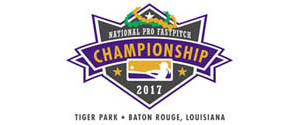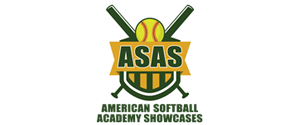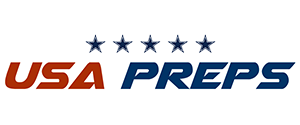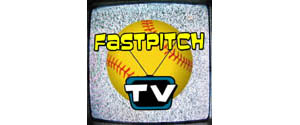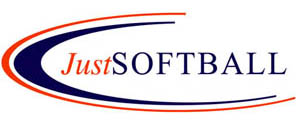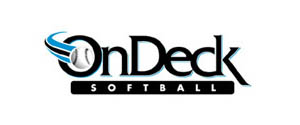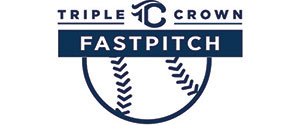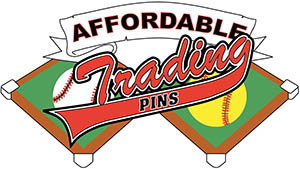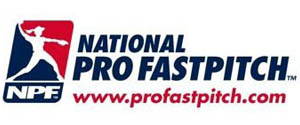Where is the Play?
Obstruction
Here is a area where umpires have an opportunity to improve. It does require judgment and understanding the concept of "unfair advantage" and also an understanding of "where is the play". Umpires that rule strictly by the letter of the rule fail miserably in this area.
Purpose
The purpose of obstruction is to avoid the defense from having an unfair advantage by having a defensive player obstruct with a base runner. If this was allowed, I would teach my infielders to tackle base runners. Get it?
Where is the Play?
Give you a scenario...runner on 1st base and 2nd base and 2 outs...18u high level of play...runners off when the ball is hit. Speed check reveals fast players on 1b and 2b. The batter runner hits the ball right over the SS forcing the CF (to her right) and LF (to her left) to move side-to-side. That in softball is a score...especially with speed on 2b and 2 outs (off on the batted ball). Runner on 2b heading to 3b crashes with the SS and falls...coach at 3b sees the obstruction and also sees the sign from the Blue. Coach sends the runner home.
Where is the play on the lead runner? Clearly there is no play at 3B on the lead runner on a base-hit to left center field. (A big hint here is the outfielders throwing home) The play is at home (the point of conflict between these two teams is at home plate on this play)....so the runner should be protected from obstruction at home and not just between 2nd and 3rd.
The question should be...had there not been obstruction what would be the greatest base that the runner would reasonably attempt? If the answer is home (as in this case) the runner should be protected from being out at home and safely awarded home (if close) or safely retuned to 3b (if out by a mile). It should never be an out.
Conclusion
In the case study above, ruling the play an out at home provides an incentive to have all shortstops collide (or obstruct) with baseburners on a base hit with two outs...that is not the intent of the rule. Umpires should ask the question "where is the play" and use appropriate judgment. In the case of a called obstruction, all benefits should be awarded to the base runner that was obstructed with.
Love to read the dissenting opinions...and also those that agree with me. So far this year, I have seen this scenario incorrectly handled four times and only properly managed once.
Manny
Head Coach
Nemesis Elite 18u
The Umpire Corner
Obstruction does not require the runner to attempt to get the base to be awarded the base. If your runner from 2nd was knocked down and stopped at 3rd, and the umpire judged at the time of obsstruction the runner would have reached home the runner or runners should all be awarded the bases they would have reached absent the obstruction. In the play you have presented, even if the runners stopped at 2nd and 3rd, at conclusion of the play the umpire should have at least awarded the lead runner home and very likely the trailing runner 3rd.
- Comp
- Posts: 589
- Joined: Sun Jun 22, 2008 11:27 am
Comp,
Agree with you.
Here is my point more precisely, it is not critical as to whether the umpire believes (her/his judgment) that the runner would have reached home safely but rather if it was a reasonable attempt at home by the runner. The runner should receive all reasonable doubt because of the obstruction by the defensive player.
As a practitioner, I can tell you that the odds that an umpire will award home if I stop the player at third is slim.
Your interpretation is correct. But how you and I interpret the purpose of obstruction is not how it is being applied. Umpires seem to just protect the runner to the base that the player is heading to at the point of contact.
Agree with you.
Here is my point more precisely, it is not critical as to whether the umpire believes (her/his judgment) that the runner would have reached home safely but rather if it was a reasonable attempt at home by the runner. The runner should receive all reasonable doubt because of the obstruction by the defensive player.
As a practitioner, I can tell you that the odds that an umpire will award home if I stop the player at third is slim.
Your interpretation is correct. But how you and I interpret the purpose of obstruction is not how it is being applied. Umpires seem to just protect the runner to the base that the player is heading to at the point of contact.
Last edited by Manny on Tue Nov 05, 2013 10:15 am, edited 1 time in total.
-

Manny - Premium Member

- Posts: 36
- Joined: Mon Apr 26, 2010 6:24 pm
And if a coach sends a runner based on seeing an umpire with his arm out indicating an obstruction call, they do so at their own risk. The coach has no way of knowing where the umpire has judged to protect the runner, other than between the 2 bases where obstructed.
- Comp
- Posts: 589
- Joined: Sun Jun 22, 2008 11:27 am
That is exactly the issue...
The coach has no way of knowing what base the runner is being protected to because of the variability of the application. If it was clear that only the next greater base is being protected then all coaches would stop the runner at 3b (referring to the aforementioned example) and also all coaches would teach their short stop to obstruct the runner.
In the case presented, the runner did not need protection to third base...there was no play there. The umpire could only protect the runner at home. This is were experienced umpires with an understanding of the game will separate themselves with their artistry and judgment.
A discussion in the umpiring community is required to more effectively and consistently apply the spirit of the rule.
The coach has no way of knowing what base the runner is being protected to because of the variability of the application. If it was clear that only the next greater base is being protected then all coaches would stop the runner at 3b (referring to the aforementioned example) and also all coaches would teach their short stop to obstruct the runner.
In the case presented, the runner did not need protection to third base...there was no play there. The umpire could only protect the runner at home. This is were experienced umpires with an understanding of the game will separate themselves with their artistry and judgment.
A discussion in the umpiring community is required to more effectively and consistently apply the spirit of the rule.
-

Manny - Premium Member

- Posts: 36
- Joined: Mon Apr 26, 2010 6:24 pm
And I would also argue the play you presented is not always a score. You indicate high level of play, so outfielders would also be equally talented. Where was ball hit, how sharply, how good of an arm does the fielder have who fielded the ball, how far did they have to move to get to the ball etc etc etc. I have seen countelss runners from 2nd gunned down at the plate on sharply hit balls into the outfield.
- Comp
- Posts: 589
- Joined: Sun Jun 22, 2008 11:27 am
Again we agree.
It is not always a score...
...and THE PLAY is at home. Home is where the umpire needs to protect the obstructed base runner.
It is not always a score...
...and THE PLAY is at home. Home is where the umpire needs to protect the obstructed base runner.
-

Manny - Premium Member

- Posts: 36
- Joined: Mon Apr 26, 2010 6:24 pm
Home is not where the umpire NEEDS to protect the runner. If the umpire feels the runner would have made it to home absent the obstruction, then yes, extend the protection to home. If the umpire does not judge the runner would have made it home then the protection ceased when the runner passed 3rd base and they are now advancing at their own risk. Where the play ended up happening has nothing to do with the protection provided by an obstruction call.
- Comp
- Posts: 589
- Joined: Sun Jun 22, 2008 11:27 am
Manny wrote:Where is the Play?
The question should be...had there not been obstruction what would be the greatest base that the runner would reasonably attempt? If the answer is home (as in this case) the runner should be protected from being out at home and safely awarded home (if close) or safely retuned to 3b (if out by a mile). It should never be an out.
If the umpire judges at the time of the obstruction that the award should be home, then that is where the runner should be placed at the end of the play. It does not matter if she attempts to go home or not. However, if the umpire judges that the award is third base, and the runner then attempts to go home, she is on her own. There is NO provision in the rules for your situation where the runner can be put out trying to go home and be placed back at third base. The award is either home or third. Obstruction is not a free pass to keep running. The only outcome of obstruction is that the runners need to end up where they would have been without the obstruction.
- ajaywill
- Posts: 121
- Joined: Tue Apr 15, 2008 1:00 pm
Sounds more like you want a free pass to just run the players until the defense stops him/her with no jeopardy of being put out.
A coach should coach the play that is in front of him/her, not assume s/he knows what the umpire things. If as the play is developing you WOULDN'T send the runner, don't. If the coach does that, there is minimal chance of running into an unnecessary out.
A coach should coach the play that is in front of him/her, not assume s/he knows what the umpire things. If as the play is developing you WOULDN'T send the runner, don't. If the coach does that, there is minimal chance of running into an unnecessary out.
- MTR
- Posts: 2317
- Joined: Thu Jan 03, 2008 5:21 am
31 posts
• Page 2 of 4 • 1, 2, 3, 4







